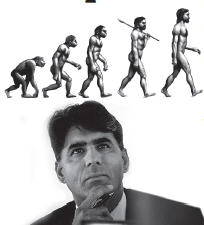
In short, Darwin’s whole concept is that small, random, heritable differences among individuals result in different chances of survival and reproductionsuccess for some, and death without offspring for others and that this natural screening leads to significant changes in shape, size, strength, armament, color, biochemistry, and behavior among the descendants. Excess population growth drives the competitive struggle. Because less successful competitors produce fewer surviving offspring, the useless or negative variations tend to disappear, whereas the useful variations tend to be perpetuated and gradually magnified throughout a population. This is one part of the evolutionary process, known as anagenesis, during which a single species is transformed.
There’s also a second part, known as speciation or cladogenesis. Genetic changes sometimes accumulate within an isolated segment of a species, but not throughout the whole, as that isolated population adapts to its local conditions. Gradually it goes its own way. At a certain point it becomes irreversibly distinct that is, so different that its members can’t interbreed with the rest. Two species now exist where formerly there was one. Darwin called that splitting-and-specializing phenomenon the “principle of divergence.” This is an important part of his theory, explaining the overall diversity of life as well as the adaptation of individual species.
